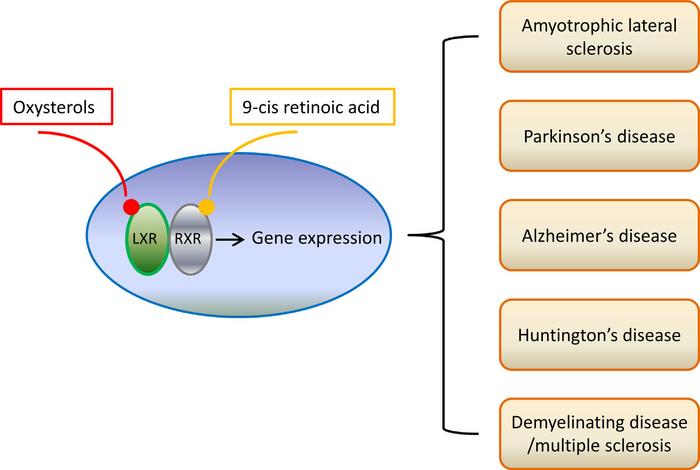A new scientific review has revealed crucial insights into how two types of hormone receptors collaborate to protect brain health and potentially prevent neurodegenerative diseases. The study, published in Genomic Psychiatry, demonstrates the intricate relationship between liver X receptors (LXRs) and thyroid hormone receptors (TRs) in maintaining critical brain functions.
Summary: Scientists have discovered that liver X receptors (LXRs) and thyroid hormone receptors (TRs) work together in a unified pathway to maintain brain health, potentially offering new therapeutic approaches for neurodegenerative disorders.
Estimated reading time: 7 minutes
Key Discovery: A Unified Pathway
“Our analysis reveals that LXRs and TRs don’t represent parallel pathways but rather constitute a single pathway through which the thyroid hormone endocrine system regulates cholesterol homeostasis,” explains Professor Margaret Warner, one of the study’s lead authors.
The research team, led by Professor Jan-Åke Gustafsson and colleagues at the University of Houston and Karolinska Institutet, found that these receptors are essential for:
- Normal brain development and maintenance
- Cholesterol balance in the brain
- Protection against age-related neurodegeneration
- Regulation of thyroid hormone function
Implications for Neurological Disorders
The study identifies several potential therapeutic applications across multiple conditions. As noted by Dr. Xiaoyu Song, co-author of the study, “What’s particularly intriguing is the age-dependent nature of these protective effects.”
The research suggests promising therapeutic implications for:
- Alzheimer’s Disease – through reduced amyloid plaque formation
- Parkinson’s Disease – via protection of dopamine-producing neurons
- ALS – through influence on motor neuron survival
- Multiple Sclerosis – by supporting myelin repair and maintenance
Glossary of Terms
- LXRs (Liver X Receptors): Nuclear receptors that regulate lipid metabolism
- TRs (Thyroid Hormone Receptors): Receptors that mediate thyroid hormone actions
- Cholesterol homeostasis: The maintenance of balanced cholesterol levels
- Neurodegeneration: Progressive loss of structure or function of neurons
- Myelin: Protective coating around nerve fibers
- Oligodendrocytes: Cells that produce myelin in the central nervous system
Quiz
- What is the main finding about LXRs and TRs?
- Name three neurodegenerative conditions that could benefit from this research.
- What specific role do these receptors play in brain health?
Answer Key:
- They form a single pathway rather than parallel pathways in regulating cholesterol homeostasis
- Alzheimer’s Disease, Parkinson’s Disease, and ALS
- They maintain cholesterol balance and protect against age-related neurodegeneration
For more information, read the full study in Genomic Psychiatry: https://gp.genomicpress.com/aop/
Enjoy this story? Get our newsletter! https://scienceblog.substack.com/


